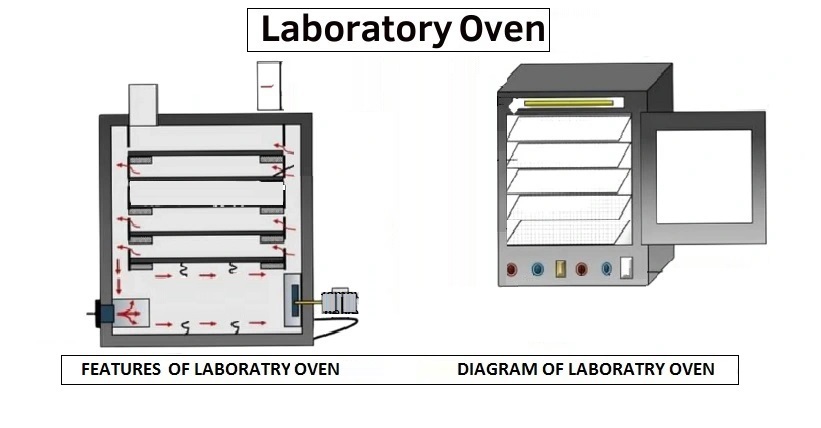Laboratory oven’s have a wide range of uses in areas such as biotechnology, pharmaceuticals, and materials manufacture. These industries often require the baking, curing, annealing, and drying of materials with variable chemical and physical compositions. Many of these process applications have distinct end results and need a variety of laboratory ovens.
A laboratory ovens is a specialized piece of equipment used in scientific research and industrial applications. It is an enclosed chamber that is designed to maintain a controlled temperature for heating, drying, and curing samples or materials. Laboratory oven’s come in various sizes, ranging from small bench top models to large industrial-scale ovens.
They can be used for a wide range of applications, including drying, sterilization, evaporation, and curing of chemicals, glassware, and other materials. Some laboratory ovens are equipped with advanced features such as programmable temperature control, digital displays, and safety features such as alarms and automatic shutoffs.
Laboratory Ovens have a Wide Range of Applications
Baking warms the product without removing moisture. Gravity convection ovens are commonly used in pharmaceutical, industrial, and material science laboratories for this purpose.
Curing is the process of hardening a substance’s chemical makeup by drying and baking it simultaneously. In the polymer research, nanotechnology, and semiconductor sectors, this procedure is commonly employed to produce epoxies, glues, plastics, and rubber.
Annealing is the process of heating and then cooling a material (glass or steel) to increase its ductility. High-temperature ovens are used in a variety of applications, including metallurgy, medical device manufacture, and material research. The healthcare sector uses stainless steel cleanroom ovens to anneal plastic syringes and catheters.
Drying, a common use for laboratory ovens, eliminates moisture from materials. Environmental, biological, and clinical laboratories often utilize gravity convection, forced-air, and vacuum ovens for common drying operations. Extremely labile biological samples with high moisture content or low heat tolerance are best suited to forced-air or vacuum ovens. These ovens eliminate moisture and reduce the boiling point of water, allowing the sample to be dried at a lower temperature.
Sterilization are designed for the sterilization of equipment and materials. It is an important application for laboratory oven where contamination is avoided, such as in medical research for food production.
Heat Treatment is used for materials, such as metal and alloys. The controlled temperature and uniform heating help to achieve the desired properties in the material.
Aging is used for testing of material, such as rubber and plastic. The controlled temperature and air circulation help to simulate the aging process a determine the long-term properties of the material.
Sample Preparation is used for variety of application such as inorganic and organic chemistry and biochemistry. For example, samples can be dried and heated to a specific temperature before analysis.

Standard and Specialized Laboratory Ovens Applications
Most laboratory oven’s are commonly used to heat and dry glassware or to sterilize lab materials. Laboratory ovens are also frequently used for material testing to measure the tensile strength, deformation, and resilience of various manufactured items. Lab ovens are typically used for testing and troubleshooting procedures like these:
- Electronic testing
- The burn-in test detects early faults in produced integrated circuits.
- Solder strength testing on circuit boards
- Accelerated simulations to measure extended product usage.
- Curing can stimulate a chemical process and change the chemical constitution of modern polymers.
Lab ovens are used specifically in biological, forensic, and environmental labs. Here are some instances of how the natural sciences use laboratory ovens to accelerate research
Forensic labs utilize specially equipped vacuum furnaces for fingerprint development.
Biological laboratories use gravity convection ovens to remove microbiological contamination from lab ware, and vacuum ovens to adhere substrates to the surface of filters and other media.
Environmental laboratories use laboratory ovens to dry specimens, weighing them before and after drying to measure the moisture content. These operations are carried out using gravity convection and forced-air ovens.
Types of Laboratory Ovens
When choosing a laboratory oven, consider the sorts of applications you will be undertaking. High-temperature, vacuum, gravity, or mechanical convection ovens are offered with features suitable for general and specialized applications, as well as enhanced security choices. These ovens are typically utilized in clinical and pharmaceutical laboratories. Forced-air multi-purpose ovens are multipurpose machines that have a quick recovery time, making them perfect for drying glassware. Vacuum ovens are suitable for materials that require an inert environment. The compliance criteria and circumstances are met using stainless steel cleanroom ovens.
Kerone is a leading name in the design and manufacture of standard and custom laboratory ovens for specialized research applications, catering to the specific needs of scientists, individuals, research laboratories, defense installations, educational institutes, and R&D laboratories of top national and international companies. Kerone’s laboratory oven choices include vacuum and gravity ovens. Kerone lab ovens are a dependable and adaptable equipment for a wide range of scientific and commercial applications.


